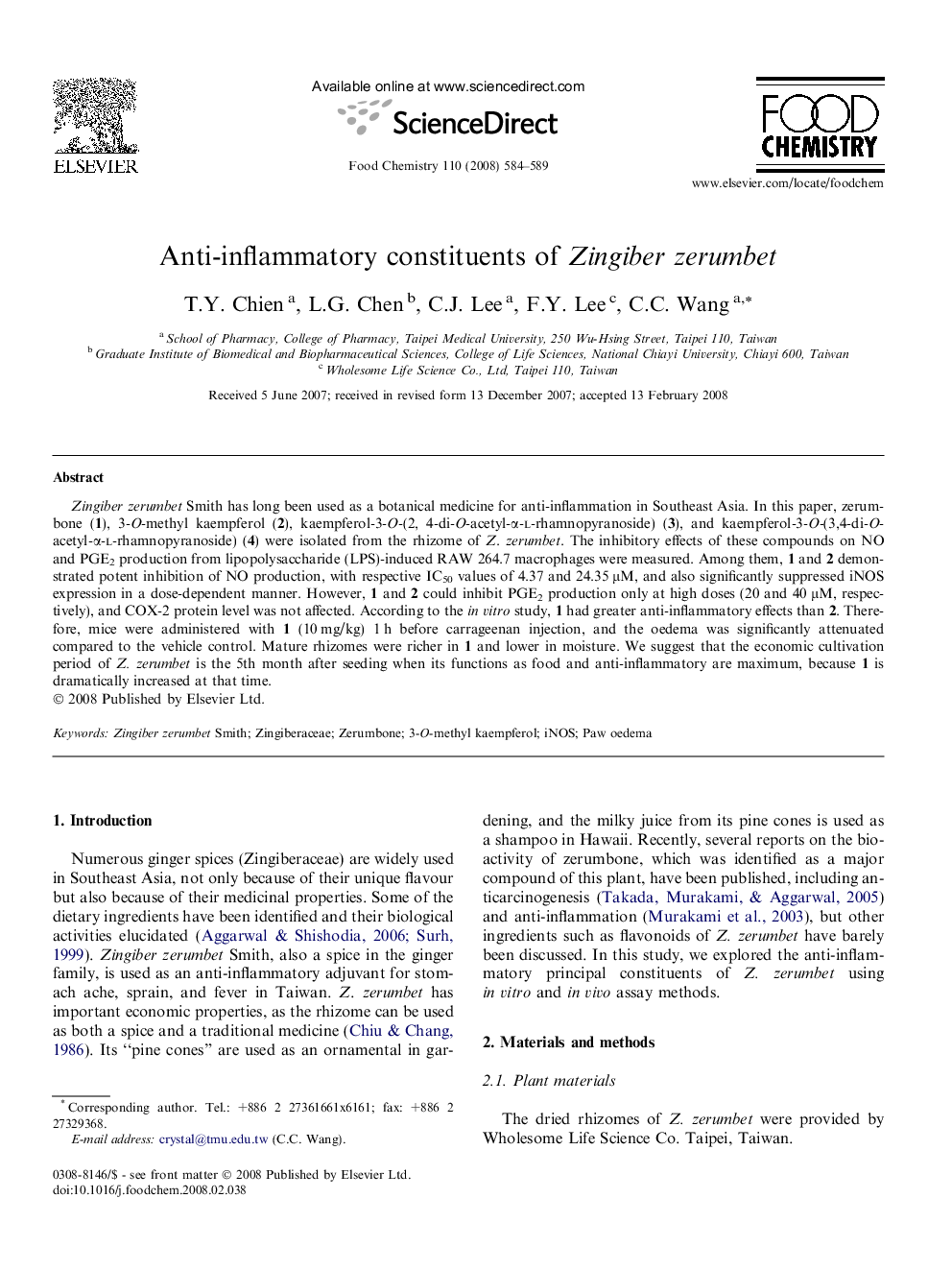| کد مقاله | کد نشریه | سال انتشار | مقاله انگلیسی | نسخه تمام متن |
|---|---|---|---|---|
| 1186590 | 963444 | 2008 | 6 صفحه PDF | دانلود رایگان |

Zingiber zerumbet Smith has long been used as a botanical medicine for anti-inflammation in Southeast Asia. In this paper, zerumbone (1), 3-O-methyl kaempferol (2), kaempferol-3-O-(2, 4-di-O-acetyl-α-l-rhamnopyranoside) (3), and kaempferol-3-O-(3,4-di-O-acetyl-α-l-rhamnopyranoside) (4) were isolated from the rhizome of Z. zerumbet. The inhibitory effects of these compounds on NO and PGE2 production from lipopolysaccharide (LPS)-induced RAW 264.7 macrophages were measured. Among them, 1 and 2 demonstrated potent inhibition of NO production, with respective IC50 values of 4.37 and 24.35 μM, and also significantly suppressed iNOS expression in a dose-dependent manner. However, 1 and 2 could inhibit PGE2 production only at high doses (20 and 40 μM, respectively), and COX-2 protein level was not affected. According to the in vitro study, 1 had greater anti-inflammatory effects than 2. Therefore, mice were administered with 1 (10 mg/kg) 1 h before carrageenan injection, and the oedema was significantly attenuated compared to the vehicle control. Mature rhizomes were richer in 1 and lower in moisture. We suggest that the economic cultivation period of Z. zerumbet is the 5th month after seeding when its functions as food and anti-inflammatory are maximum, because 1 is dramatically increased at that time.
Journal: Food Chemistry - Volume 110, Issue 3, 1 October 2008, Pages 584–589